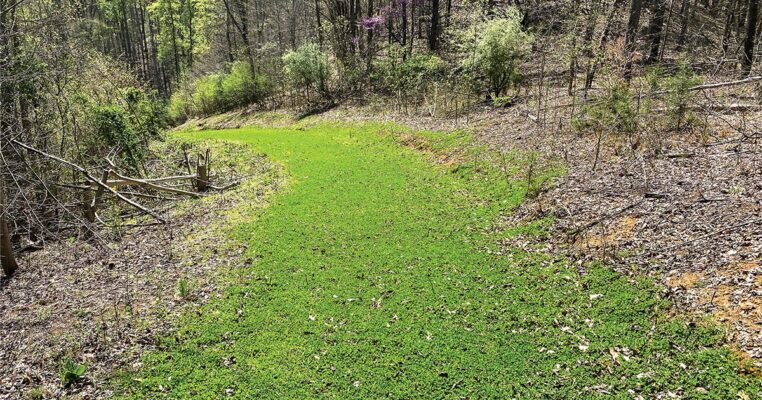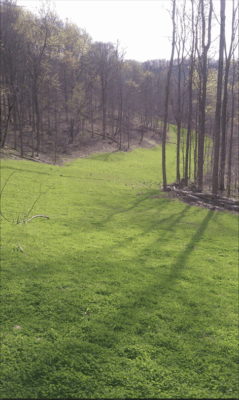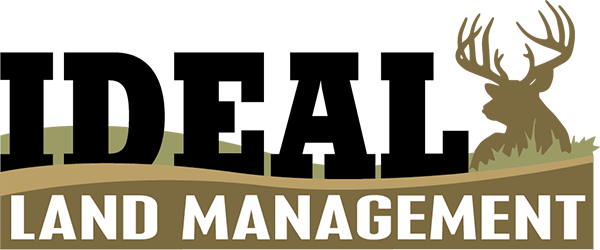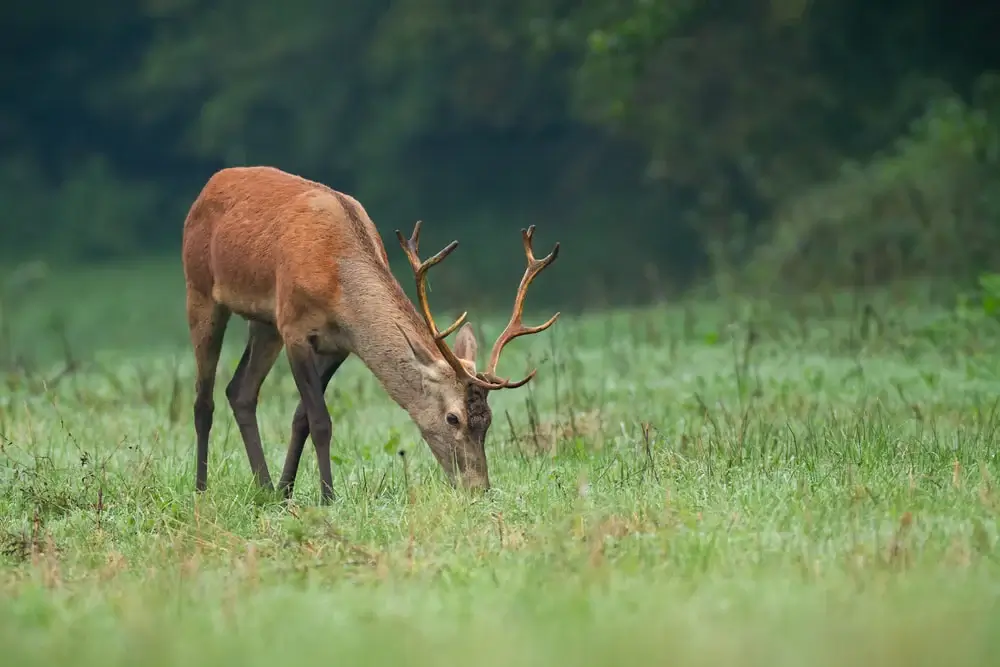Ideal Tips & Info
The Benefits of Food Plots: Why Every Wisconsin Landowner Should Consider One
Custom food plots in Wisconsin are one of the most effective ways to improve wildlife habitat, attract and hold more deer, and increase the long-term value and usability of your land.
Whether you’re preparing hunting property, restoring native ecosystems with custom food plots, or reclaiming overgrown acreage, food plots deliver benefits that last well beyond the hunting season.
At Ideal Land Management, we specialize in custom food plot installation designed specifically for Wisconsin’s diverse landscapes, from rich prairie soil to rugged woodland terrain. Our region-specific approach ensures that every food plot we install supports healthy wildlife patterns and sustainable land use.
Custom food plots in Wisconsin are especially impactful in a state with such a rich mix of hardwood forests, open fields, and rolling farmland. From the Driftless Area’s bluffs to the sandy soils of the Northwoods, the right food plot strategy can dramatically enhance habitat quality, boost deer activity, and restore ecological balance on your land.
Ideal Land Management helps Wisconsin landowners turn underutilized or unmanaged land into thriving, wildlife-friendly spaces. Whether your focus is conservation, hunting, or both, food plots in Wisconsin should be a top priority for anyone looking to get more from their property.
1. Improves Wildlife Habitat and Biodiversity
In southern and central Wisconsin, native habitat is increasingly fragmented by agriculture and development. By adding food plots, you’re creating a supplemental food source that helps support healthy populations of whitetail deer, wild turkey, pheasants, and pollinators like bees and butterflies.
Our prairie planting and food plot services combine native grasses and forbs with high-protein seed blends that offer year-round value. This boosts biodiversity and supports local ecosystems while giving game animals consistent access to high-quality forage.
2. Better Deer Activity and Hunting Success
If you’re managing land for whitetail hunting in Wisconsin, a well-placed food plot can dramatically increase your success. Whether you hunt in Buffalo County, the Kettle Moraine, or along the Mississippi River bluffs, food plots help you pattern deer movement, hold them on your land longer, and give you control over stand placement.
By planting strategically—near bedding cover or travel corridors—you can improve your odds during both bow and gun season. With the right mix, your food plot becomes a natural magnet from early fall through late-season cold snaps.
3. Supports Soil Health Without Disturbance
Unlike traditional agriculture, food plot planting is typically done on a small scale with minimal tillage. In Wisconsin’s varied soil types—ranging from sandy loam to heavy clay—we use regionally appropriate techniques to protect topsoil and improve structure.
Adding cover crops like winter wheat, clover, or turnips helps reduce erosion, fix nitrogen in the soil, and suppress invasive weed growth. Over time, this promotes healthier soil biology and makes your land more resilient to weather extremes and runoff issues.
4. Adds Real Value to Your Property
A well-maintained property with cleared trails, visible wildlife, and established food plots is more appealing to potential buyers—and more functional for your own use. Landowners in counties like Sauk, Iowa, or Richland are seeing higher resale value and recreational utility by making thoughtful improvements like food plots and habitat restoration.
Even if you’re not selling, food plots can enhance year-round use of your property, from wildlife watching and photography to youth hunting and conservation education.
Seasonal Planting Guide for Wisconsin
- Spring (April–June): Plant warm-season annuals like soybeans or lablab after the last frost. Great for early nutrition and antler growth.
- Late Summer (August–September): Cool-season blends like brassicas, winter rye, oats, and clover thrive in Wisconsin’s fall conditions and provide late-season attraction.
- Frost Seeding (Late Winter): Ideal for frost-seeding clover in February or March to jumpstart early green-up without tilling.

Optimal Food Plot Size and Shape for Wisconsin Landowners

When it comes to custom food plots in Wisconsin, size and shape matter, for winter food plots, ½ to 3 acres is ideal. A good rule of thumb is to plant at least one food plot per 100 acres of forested land, or dedicate about 1 to 5% of your total hunting property to food plots. Planting too little may result in overgrazing, while planting too much can become expensive and difficult to maintain.
Smaller, well-distributed plots often outperform large, centralized ones. They create more edge habitat, shorten shooting distances for hunters, and improve deer movement across your land. Oblong or crescent-shaped plots increase edge-to-cover transition zones—high-traffic areas for deer—but can be more difficult to manage with equipment. Square or rectangular plots simplify tractor access and allow for soft edges of native vegetation, reducing stress on surrounding woodland. Keep plots within 50 yards of dense cover and no wider than 100 yards to limit shade and maximize deer utilization.
Best Locations for Food Plots on Wisconsin Properties
Choosing the right food plot location is just as important as selecting the right plants. Place your food plots in areas where deer naturally travel and feel safe, typically near bedding areas or travel corridors. Existing openings, such as old logging decks, retired crop fields, skid trails, fire breaks, or utility right-of-ways, often make excellent food plot sites and reduce the cost of land clearing.
Whenever possible, choose level or gently sloped ground for easier planting and better growing conditions. Avoid planting in low, wet bottomlands or dry, rocky ridge tops—these areas are more challenging to manage and less productive. Steer clear of property lines and plots visible from public roads to reduce the risk of poaching. If planting near a road is unavoidable, consider adding a visual barrier of pines or evergreens to shield the area and make wildlife feel more secure.
Recommended Seeds for Wisconsin Terrain
We proudly offer Real World Wildlife Products, trusted by Midwest landowners and designed specifically for regional conditions. These blends outperform generic big-box mixes and are backed by proven results in Wisconsin fields and forests.
Whether you’re establishing a new plot or replanting an old one, we help you choose the right combination for your goals—whether that’s early bow season success or late-season herd nutrition.
Why Work With Ideal Land Management?
As lifelong Wisconsin residents and outdoorsmen, we understand the unique challenges of managing land in this state—from invasive species like buckthorn and garlic mustard to unpredictable weather and tricky soil. Our equipment, experience, and regional knowledge ensure that your food plot installation is done right the first time.
We offer on-site consultations throughout southern and central Wisconsin, customized planting plans, and reliable, year-round land management services.
Let’s Build the Perfect Food Plot for Your Land
Ready to attract more wildlife, improve your hunting opportunities, and invest in the long-term health of your property? Contact Ideal Land Management today to schedule your free site visit and get started.

